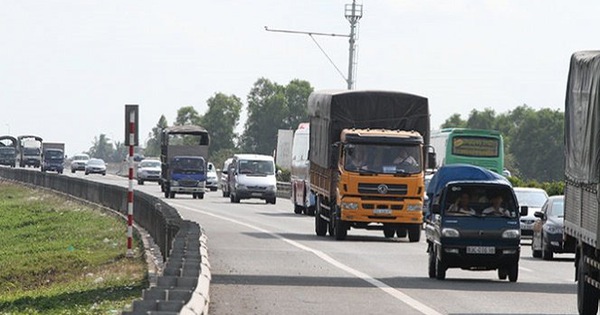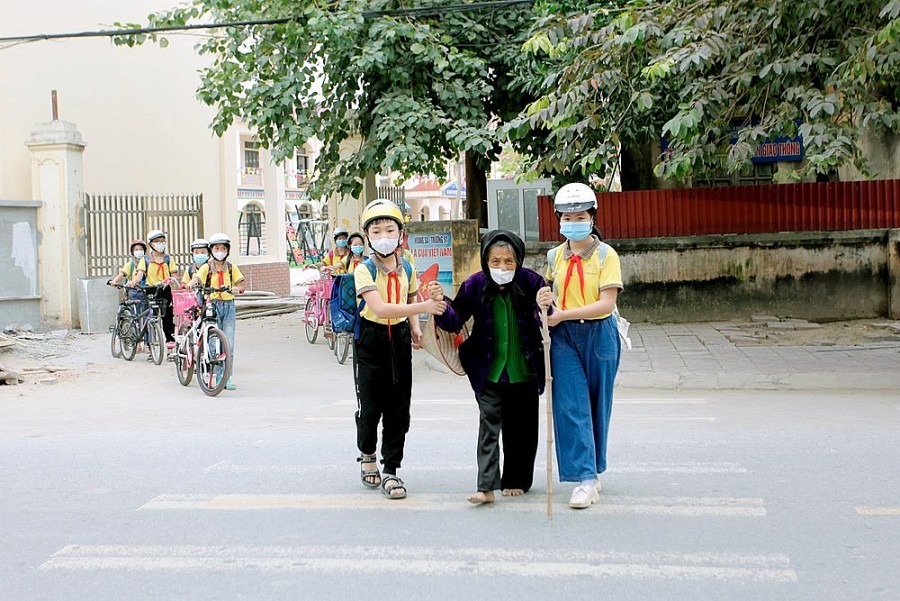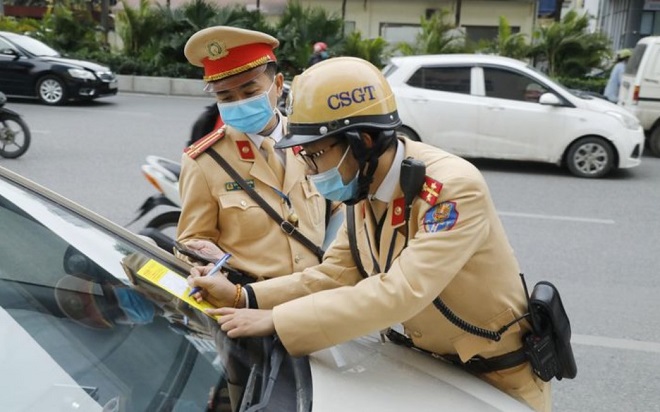12 cases of slowdown during participation in road traffic in Vietnam
What are the cases of slowdown during participation in road traffic in Vietnam? - Le Hang (HCMC)

12 cases of slowdown during participation in road traffic in Vietnam (Internet image)
Regarding this issue, LawNet would like to answer as follows:
1. 12 cases of slowdown during participation in road traffic in Vietnam
According to Article 5 of Circular 31/2019/TT-BGTVT, a vehicle operator participating in road traffic must slow down to a stop safely when:
- He/she encounters a warning sign or obstacle on the road; or
- He/she changes in travel direction or has limited vision; or
- He/she arrives at an at-grade intersection; at a level crossing; at a road curve; at a road with hairpin turns or steep slopes; at a narrow or bumpy road; or
- He/she crosses a narrow bridge or culvert; crosses an overflowing damp, underground or tunnel; reaches near the peak of a slope, when descending it; or
- He/she passes an area with schools, hospitals, bus stations, crowded public constructions; an area with large population, with factory or office situated along the road; road construction sites; traffic accident scene; or
- He/she approaches a pedestrian or a person with disability confined to a wheelchair crossing the road; or
- He/she encounters livestock walking or herded along the road; or
- He/she avoids a vehicle from the opposite direction or gives way to a vehicle behind; receives a turn signal or an emergency flasher of a leading vehicle;
- He/she approaches a bus stop or a parking spot with passengers getting on or off of a vehicle; or
- He/she encounters a prioritized vehicle on a mission; a heavy transport vehicle; pedestrians; or
- He/she operates the vehicle in the rain, fog, dust; on slippery, muddy road or road with lots of scattered rocks and debris;
- He/she controls the vehicle through vehicle weigh stations, police stations or tollbooths for road vehicles.
2. Regulations on erection of speed limit signs in Vietnam
According to Article 10 of Circular 31/2019/TT-BGTVT (amended in Circular 06/2023/TT-BGTVT), regulations on placing speed limit signs in traffic are as follows:
- The erection of speed limit signs shall comply with road signal laws and take into account practical conditions of routes and segments of the roads relating road infrastructure, rate and type of vehicles and time frames within the day.
With respect to projects on new construction, restoration or upgrade of road works, fully erect speed limit signs before bringing such works into use. With respect to active routes within their division, road authorities must promptly erect road signs as per laws on their part.
- With respect to roads leading to or away from the expressways, the speed limit displayed on the speed limit signs must not be lower than 50 km/h.
- Competent authorities specified in Clause 4 of Article 10 of Circular 31/2019/TT-BGTVT shall decide to:
+ Erect a speed limit sign for each direction on a dual carriageway;
+ Erect speed limit signs applied to a specific time in a day (additional panels, variable message signs);
+ Erect speed limit signs applied to specific vehicles posing high risk of causing unsafe traffic;
+ Erect speed limit signs displaying value greater than 60 km/h (with respect to roads in crowded areas), greater than 90 km/h (with respect to roads outside of crowded areas) on routes having design speed greater than the maximum speed specified in Articles 6 and 7 of this Circular after ensuring traffic safety.
- The competent authorities deciding to erect road signs with respect to cases specified in Clause 3 of Article 10 of Circular 31/2019/TT-BGTVT, including:
+ Ministry of Transport shall erect road signs on expressways;
+ Vietnam Road Administration shall erect road signs on national highways and other roads under management of Ministry of Transport (except expressways);
+ People’s Committees of provinces and central-affiliated cities shall erect road signs on province-level, district-level, commune-level, urban and private roads within their provinces and cities.
3. Regulation on safe distance between 2 vehicles participating in road traffic in Vietnam
According to Article 11 of Circular 31/2019/TT-BGTVT, the safe distance between 2 vehicles participating in road traffic is as follows:
- When participating in road traffic, the operators and controllers of heavy-duty machines must maintain a safe distance from the vehicle in their immediate front; keep the distance no lower than the distance value displayed on the “Minimum distance between two vehicles” sign.
- Safe distance between 2 vehicles participating in road traffic
+ In dry road conditions, safe distance corresponding to each speed is prescribed as follows:
|
Speed (km/h) |
Minimum safe distance (m) |
|
V + 60 |
35 |
|
60 < V ≤ 80 |
55 |
|
80 < V ≤ 100 |
70 |
|
100 < V ≤ 120 |
100 |
When controlling a vehicle slower than 60 km/h, an operator must maintain the appropriate safe distance from the vehicle in his/her immediate front; this distance depends on actual vehicle density and traffic to ensure traffic safety.
+ With respect to rain, fog, slippery road, roads with hairpin turns, steep slopes or limited vision, the operator must adjust the safe distance value to be greater than that displayed on the sign or the value specified in Point a of this Clause.
Ho Quoc Tuan
- Key word:
- slowdown
- road traffic
- in Vietnam
- Cases of land rent exemption and reduction under the latest regulations in Vietnam
- Economic infrastructure and social infrastructure system in Thu Duc City, Ho Chi Minh City
- Regulations on ordination with foreign elements in religious organizations in Vietnam
- Increase land compensation prices in Vietnam from January 1, 2026
- Determination of land compensation levels for damage during land requisition process in Vietnam
- Who is permitted to purchase social housing according to latest regulations in Vietnam?
-

- Regulations on pedestrians participating in road ...
- 11:30, 18/01/2025
-

- Regulations on stopping road traffic vehicles ...
- 09:30, 16/01/2025
-

- Cases permitted to use horn signals for road traffic ...
- 14:26, 06/01/2025
-

- Promulgating a new Decree on penalties for road ...
- 11:43, 31/12/2024
-

- 04 contents for legal knowledge education on road ...
- 08:00, 12/12/2024
-

- Notable new policies of Vietnam effective as of ...
- 16:26, 11/04/2025
-
.Medium.png)
- Notable documents of Vietnam in the previous week ...
- 16:21, 11/04/2025
-
.Medium.png)
- Notable documents of Vietnam in the previous week ...
- 16:11, 02/04/2025
-
.Medium.png)
- Notable new policies of Vietnam to be effective ...
- 16:04, 02/04/2025
-
.Medium.png)
- Notable new policies of Vietnam effective from ...
- 14:51, 21/03/2025
 Article table of contents
Article table of contents
